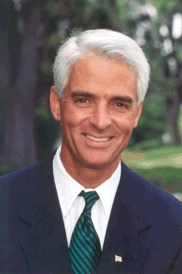At a forum about mountaintop removal and Dominion’s proposed Wise County plant hosted by Temple Rodef Shalom and coorganized by the Falls Church Presbyterian Church the evening of April 30, one participant used business—as opposed to ecological—economics to make the case for coal. And to those who know that not all economics are created equal, it went over about as well as “valley fill.”
About 35 people turned out for the forum. They heard first from Joe Lucas, who helped form Americans for Balanced Energy Choices in 1999 and is now the communications vice president for the American Coalition for Clean Coal Electricity (ACCCE). Following Lucas, Mike McCoy, a field organizer for Appalachian Voices, and Rory McIlmoil, who wrote his master’s thesis on the elimination of MTR in West Virginia, gave a short slide presentation. The forum was moderated by Steve Mufson, a reporter and editor for The Washington Post for 17 years and now the newspaper’s energy correspondent.
Lucas opened by stating the three things he believes everyone can agree on: “We need to protect the environment”; “We enjoy the benefits of energy,” in this case, electricity; and “The cost of energy matters.” He didn’t really address the first point. As for the second, he mentioned the skyrocketing amount of electricity we use, and offered himself as an example—one person who grew up in a modest house in Kentucky, and who now has five TVs plugged into his walls. And as for cost, he wore the hat of a traditional economist, someone who believes we can—and should—grow forever and the only way to do that is by having energy that is relatively inexpensive.
The setting helped contribute to the civil tone of those in attendance, but my mind roiled over some of the things Lucas said: “I’ve driven through West Virginia and I’ve driven through Kentucky and we still have a lot of mountains there.” Let’s see…470 mountains in Appalachia leveled, 29 of those in Virginia.
Lucas even invoked someone responsible for the deaths of an estimated 20 million people last century: “If you’re going to have an omelet, you’re going to have to break some eggs,” Lucas said, attributing this quotation to Stalin, though it was probably New York Times reporter Walter Duranty who said this.
As someone who lived in Russia after college and has studied the “man of steel’s” crimes, my stomach churned upon hearing this. In the context of people who live in Appalachia and who are seeing their land destroyed, this went beyond insensitive. Whose eggs? Whose omelet? Then again, given Stalin’s environmental crimes and the displacement and exile of entire groups of people during his reign of terror, the quotation may be apt.
Attendees asked a number of questions and some commented on coal’s contribution to global warming as well as the ability to sequester carbon dioxide.
I wanted to know—and I’m still seeking an answer—whether coal is, in effect, a net energy loser, strictly on cost grounds. Lucas said, “Absolutely not.” But if you factor in the rising price of diesel and transportation as well as the peaking of coal itself (Lucas repeated the oft-stated “250 years” left), is it or is it not a “loser” like corn ethanol?
If, like the ecological economists, you factor in all the externalities, including the destruction of the mountains, then coal certainly is a “loser” for you won’t derive the benefits you would from keeping the mountains intact. No forestry, which done selectively, could be maintained indefinitely. No recreational opportunities. No food, by way of hunting or the gathering of mushrooms or medicinals, nuts or berries. And, most of all, no further opportunities for the human spirit to derive the kind of sustenance it needs.
People can and do make money off net energy losers. But in the big scheme of energy, we can no longer afford them. We never really could. It’s just that we haven’t known where our energy comes from. But we are starting to learn—and we’ve got to learn, if we are to understand the real costs of the way we live.
Leigh Glenn is a resident of McLean, Va. She notes that this was the second MTR forum in as many nights. One on April 29 was all about MTR and its effects and was cosponsored by Immanuel on the Hill and Trinity United Methodist Church in Alexandria. Greater Washington Interfaith Power and Light, which works with congregations to reduce their energy consumption, helped put together both events.






 In a number of setbacks for the coal industry, the state of Florida has turned down 2 coal-fired power plants in the past month. Republican governor of Florida Charlie Crist has come out in support of these recent decisions, saying the future of coal as fuel for generating electricity in Florida is “not looking good.”
In a number of setbacks for the coal industry, the state of Florida has turned down 2 coal-fired power plants in the past month. Republican governor of Florida Charlie Crist has come out in support of these recent decisions, saying the future of coal as fuel for generating electricity in Florida is “not looking good.” 